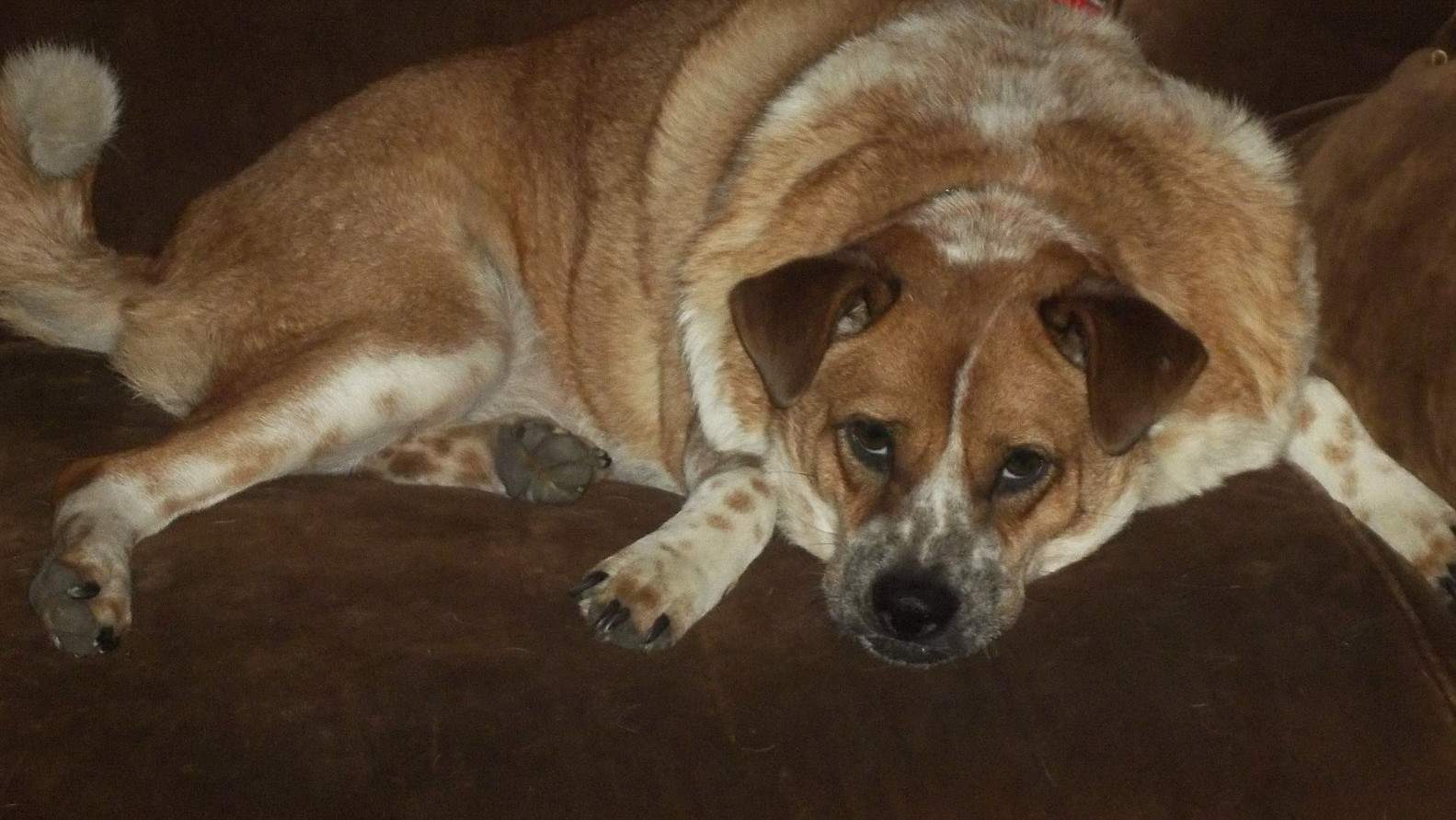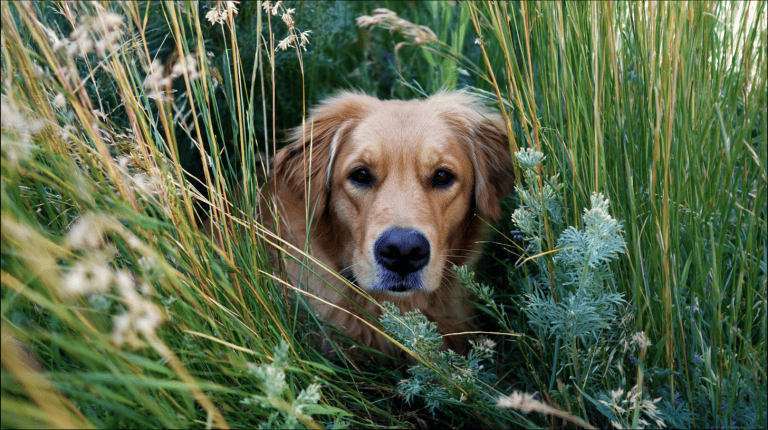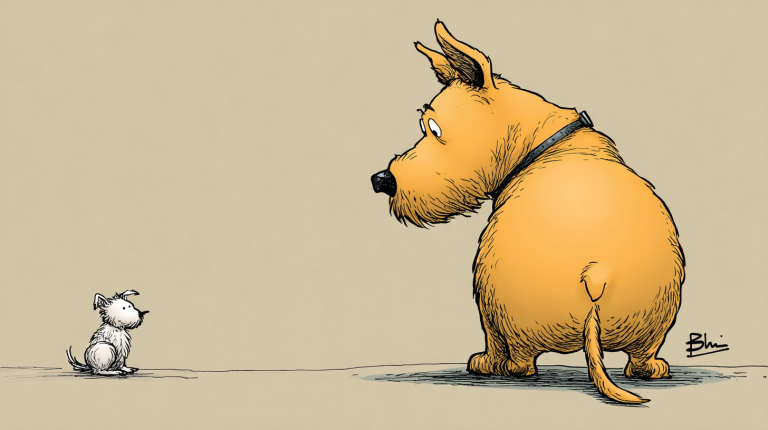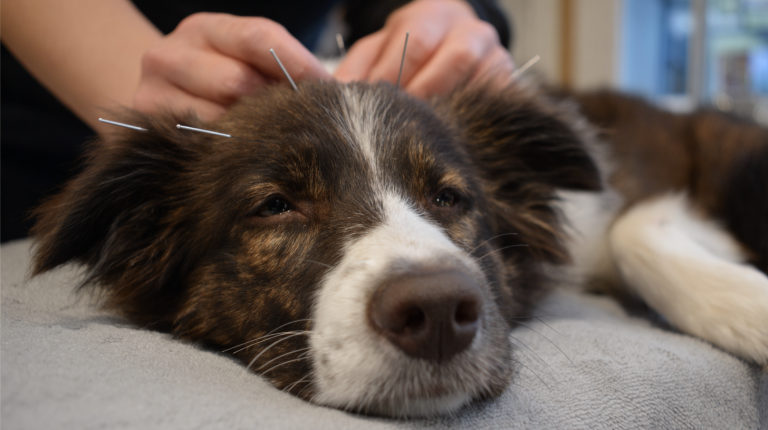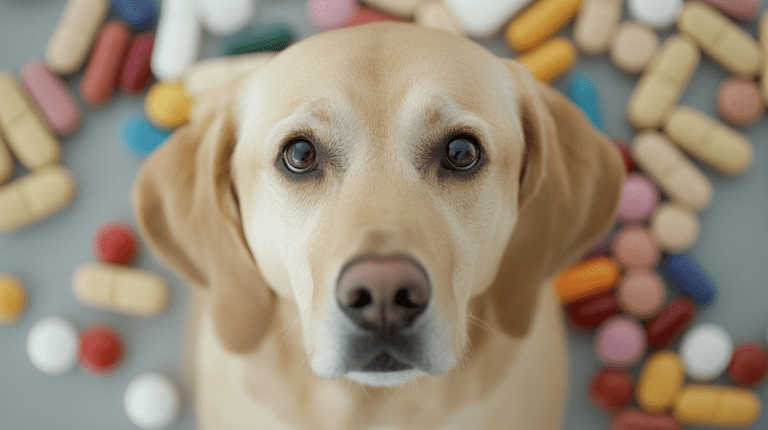Vet Buzz from Bill Barboni, DVM and Chris Pitts, RVT,
Marin Pet Hospital, San Rafael, CA
If you can’t make out a discernable waistline on your dog, a little weight loss might be just the ticket. A chubby dog is at higher risk for orthopedic problems (such as torn anterior cruciate ligaments), diabetes and breathing problems. Losing a few pounds can help reduce the need for surgery, medication and visits to the veterinarian.
Veterinarians use a scale called the Body Condition Score to determine how thin or chubby your dog may be. A Body Condition Score of 6 is a grossly obese dog, while a Body Condition Score of 1 is an emaciated dog. The ideal Body Condition Score is 3. This means that you should still be able to see your dog’s waistline without feeling his individual ribs. Your veterinarian will be happy to give you your dog’s Body Condition Score.
Just like with humans, if your dog takes in more calories than he can burn, he will gain weight. Weight loss can be as easy as putting fewer kibbles in the bowl each day. One or two fewer treats a day can also add up to weight loss. Very rarely do drastic measures need to be taken where a dog’s food intake needs to be cut in half, but it does happen.
In addition, you can also increase your dog’s exercise time incrementally. For instance, if you take your dog for a 20-minute walk every evening, try tacking on an extra five minutes a week until you have reached the increased duration you want, say 45 minutes. Increasing exercise gradually will strengthen tendons and muscles, thereby preventing orthopedic injuries.
The most common medical condition where weight gain, or difficulty with weight loss, is a symptom is a low thyroid level. Typically, a dog with a low thyroid level will be over-weight, lethargic, have a poor hair coat, and may have skin issues. Your veterinarian can run a blood test to determine if your dog’s thyroid levels are low. There are medications that can be given to supplement your dog’s thyroid hormone, and overall improvements are typically seen within six weeks.
Any thyroid issues aside, if your dog is looking thick around the middle, weigh your dog. Then, try a moderate reduction in the food supply for 10 days, and take your dog to be weighed again to see if there has been a change. (Most veterinarians will allow you to weigh your pet for free). Talk to your veterinarian about a target of pounds to lose. Just as with people, the slow approach is better than a starvation diet or trying to blast off the pounds with a bout of vigorous exercise.
And don’t forget that your four-legged friend would love to help you with your own weight loss resolution if extra walks are involved.
Good luck with your New Year’s Resolutions!

